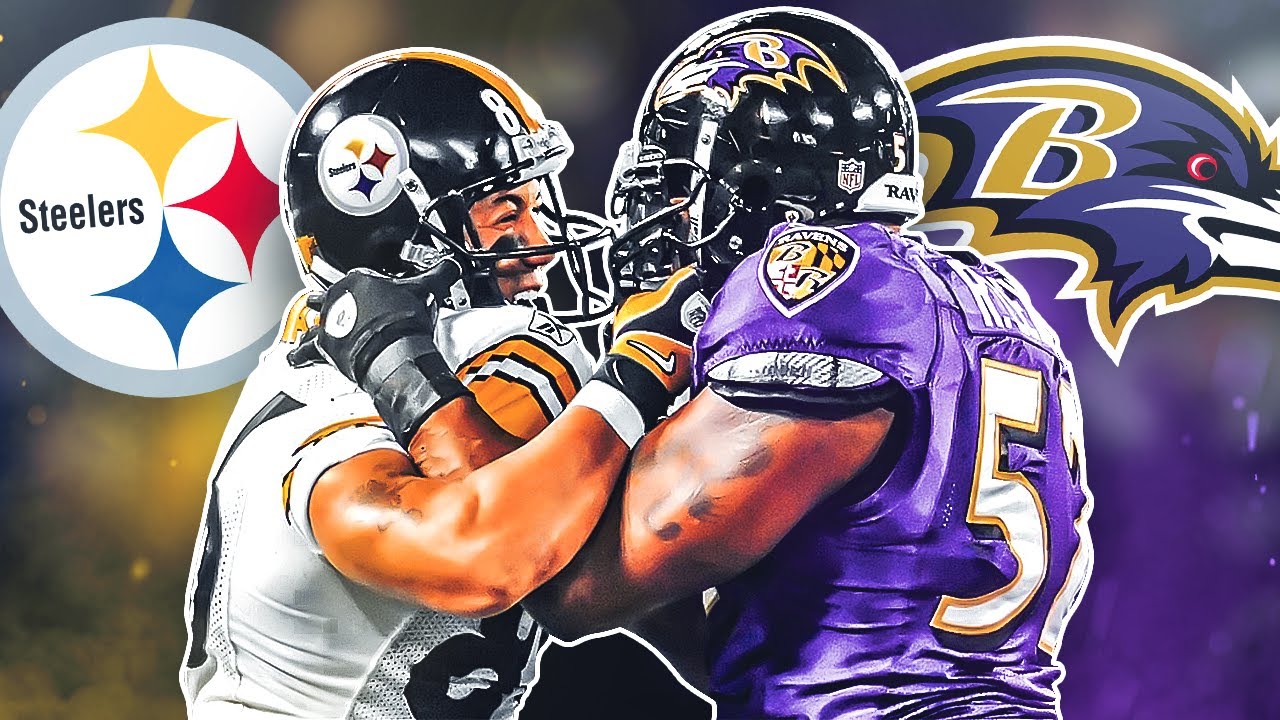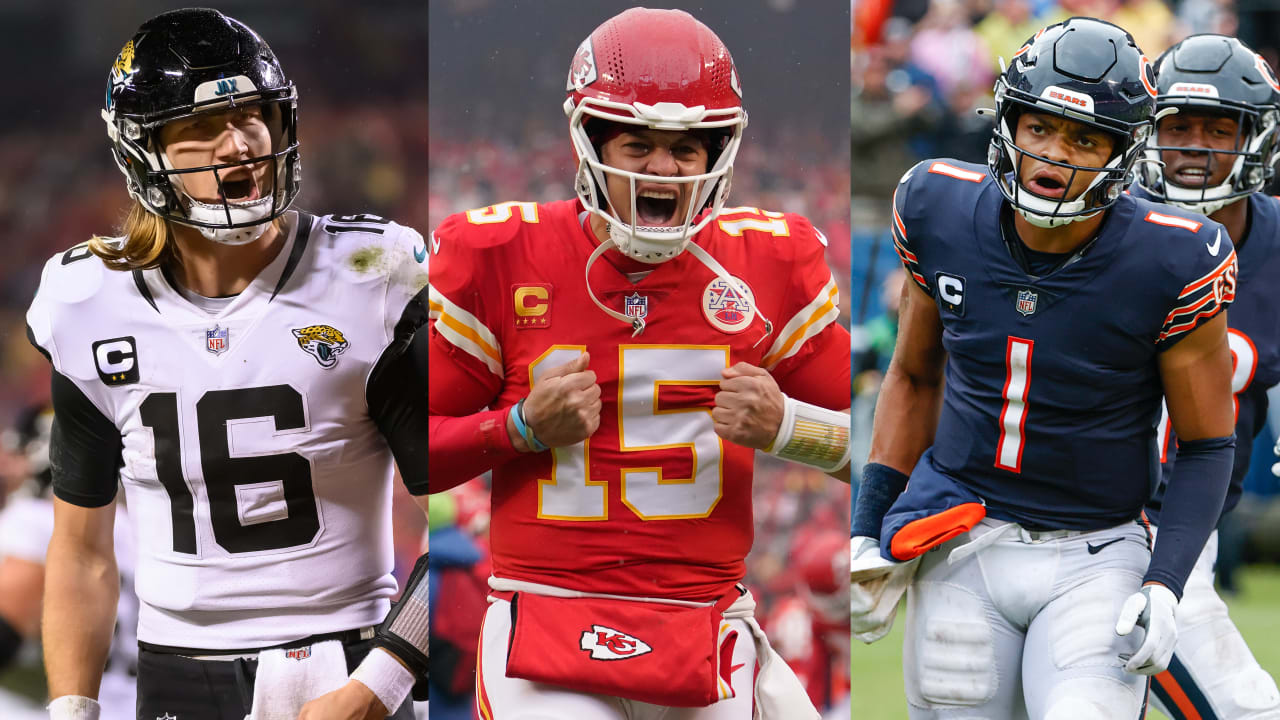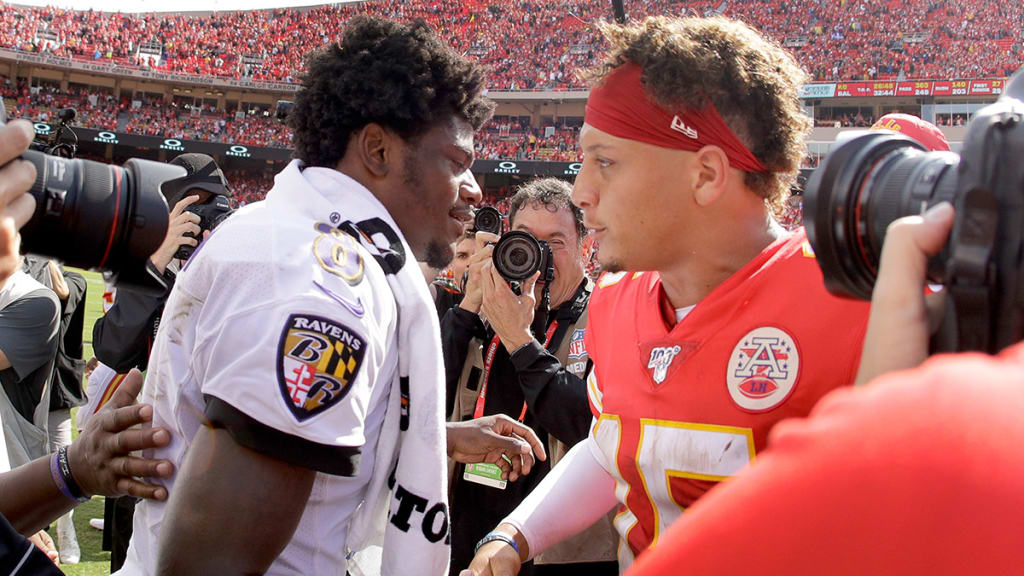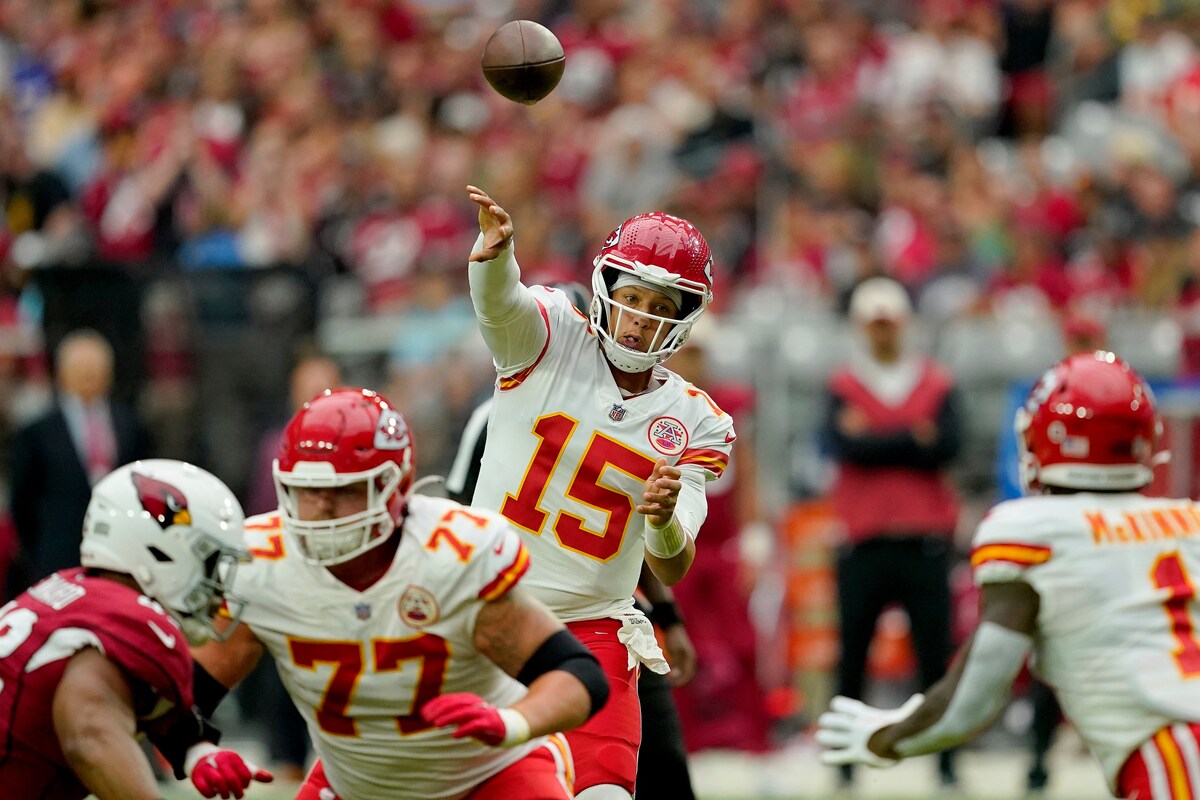Introduction

NFL rivalries are legendary for their intensity and passion, often defining entire seasons for teams and their fans. Imagine the roar of the crowd as the Dallas Cowboys face off against the Washington Commanders, a rivalry that has seen its fair share of nail-biting moments and fierce competition. In fact, the 1979 showdown between these two teams, where the Cowboys pulled off a stunning 35-34 victory, remains one of the most thrilling games in NFL history. Such moments encapsulate the heart-pounding excitement that rivalries bring to the sport.
Rivalries in the NFL are more than just games; they are battles steeped in history, pride, and emotion. These matchups often transcend the sport, becoming cultural events that capture the attention of millions. They shape team identities and fuel fan loyalty, creating a sense of community and belonging. For fans, these games are a chance to witness football at its most intense, where every play and every yard gained or lost can make all the difference. The deep-rooted animosity between rival teams adds an extra layer of drama and excitement, making these games must-watch events each season.
Historical Context

The Origins of NFL Rivalries
In the early days of the NFL, rivalries began to form as teams competed fiercely for dominance. One of the oldest and most storied rivalries is between the Green Bay Packers and the Chicago Bears. This rivalry dates back to 1921 and has become a defining feature of the league, marked by intense games and deep-seated animosity. The origins of these rivalries were often rooted in geographic proximity and competitive spirit, setting the stage for decades of unforgettable matchups.
The formation of key rivalries was heavily influenced by the personalities and playing styles of the teams involved. Legendary coaches like Vince Lombardi of the Packers and George Halas of the Bears added fuel to the fire, with their teams battling not just for wins but for pride and legacy. These early rivalries captured the imagination of fans and set the tone for what would become one of the most passionate aspects of the NFL. For more insights into the early days of NFL rivalries, visit the Pro Football Hall of Fame.
Impact of League Expansions and Realignments on Rivalries
As the NFL expanded and underwent various realignments, the landscape of rivalries evolved. The merger with the AFL in 1970 was a significant turning point, introducing new teams and reshaping the league’s structure. This expansion created opportunities for new rivalries to emerge and for existing ones to gain even more prominence. The Pittsburgh Steelers vs. Baltimore Ravens rivalry, for example, intensified following the Ravens’ establishment in 1996 and their subsequent success.
League realignments also played a crucial role in maintaining and intensifying rivalries. The 2002 realignment, which created the current divisional structure, ensured that traditional rivalries would continue to thrive. By placing historic rivals in the same divisions, the NFL guaranteed that these teams would face each other twice a season, maintaining the competitive spirit and fan interest.
Top NFL Rivalries

1. Dallas Cowboys vs. Washington Commanders
History and Background
The rivalry between the Dallas Cowboys and the Washington Commanders is one of the most intense and storied in NFL history. It began in the 1960s when the Cowboys entered the league as an expansion team. The rivalry quickly heated up due to a combination of competitive games and off-field antics. One of the most notable origins of the rivalry was the personal feud between Cowboys’ general manager Tex Schramm and Commanders’ owner George Preston Marshall. This animosity set the stage for decades of fierce competition and mutual disdain.
Origins of the Rivalry
The Cowboys-Commanders rivalry officially began on October 9, 1960, when the two teams first met. The Cowboys were still in their infancy, while the Commanders were an established team with a strong following. Despite their early struggles, the Cowboys rapidly improved and became a dominant force in the NFL. The rivalry was further fueled by the contrasting images of the two teams: the Cowboys, with their “America’s Team” moniker and glamorous persona, and the Commanders, representing the gritty, hardworking ethos of their fan base.
Key Moments and Turning Points
Throughout the decades, the Cowboys and Commanders have provided fans with numerous unforgettable moments. One key turning point in the rivalry occurred in the 1970s when both teams were consistently competing for NFC supremacy. The 1972 NFC Championship Game was a pivotal moment, with the Commanders defeating the Cowboys 26-3 to advance to their first Super Bowl. This victory solidified the rivalry and established the Commanders as a formidable adversary.
Another significant moment came in 1991 when the Commanders won their third Super Bowl. The Cowboys, under head coach Jimmy Johnson, were rebuilding and poised to challenge for supremacy. The early 1990s saw the rivalry reach new heights as both teams were among the best in the NFL, culminating in memorable clashes that often had playoff implications.
Memorable Games
The Cowboys vs. Commanders rivalry has produced some of the most memorable games in NFL history. One such game took place on December 31, 1979, known as the “Roger Staubach Comeback.” The Cowboys trailed 34-21 with less than four minutes remaining, but Staubach led a miraculous comeback to win 35-34, securing a playoff berth for Dallas. This game epitomized the never-say-die spirit of the Cowboys and the bitter disappointment often felt by Commanders fans.
Another iconic game occurred on November 28, 1974, during a Thanksgiving Day showdown. The Commanders entered the game with an 8-3 record, while the Cowboys were 7-4. In a game filled with drama and high stakes, the Cowboys emerged victorious with a 24-23 win, thanks to a last-minute touchdown drive led by backup quarterback Clint Longley, known as the “Mad Bomber.” This game is often cited as one of the greatest moments in Cowboys history and a heartbreaker for the Commanders.
Player and Fan Perspectives
The rivalry between the Cowboys and Commanders is deeply personal for both players and fans. Former Cowboys quarterback Roger Staubach once said, “When you play the Commanders, it’s not just another game. It’s a battle for pride and honor.” This sentiment is echoed by many players who have experienced the intensity of this rivalry firsthand.
Commanders’ legendary coach Joe Gibbs remarked, “There’s something special about playing the Cowboys. The fans get louder, the hits are harder, and the stakes feel higher.” The players feed off the energy of the fans, who consider these games the highlights of their season.
For fans, the Cowboys vs. Commanders rivalry is a source of endless debate and passion. The games are more than just sporting events; they are cultural touchstones that bring families and communities together. Cowboys fan Jim from Dallas shared, “Every game against the Commanders is like a holiday. We gather with friends and family, and it’s a tradition that goes back generations.” On the other side, Commanders fan Susan from Washington, D.C., stated, “Beating the Cowboys is the best feeling. It’s more than a win; it’s a statement.”
The Cowboys vs. Commanders rivalry is a testament to the enduring appeal of the NFL. It encapsulates the drama, intensity, and passion that make football more than just a game. Whether you’re a die-hard fan or a casual observer, the history and legacy of this rivalry are impossible to ignore.
2. Green Bay Packers vs. Chicago Bears

History and Background
The rivalry between the Green Bay Packers and the Chicago Bears is the oldest in the NFL, dating back to 1921. The origins of this intense competition began when the two teams met for the first time on November 27, 1921, with the Bears, then known as the Chicago Staleys, emerging victorious with a 20-0 win. This game marked the beginning of a fierce rivalry that has spanned over a century, characterized by hard-hitting battles and a deep-seated animosity between the two teams.
In the early years, the rivalry was fueled by the proximity of the two cities and the competitive nature of both teams. The Bears, under the leadership of legendary coach George Halas, quickly became one of the dominant teams in the league. Meanwhile, the Packers, led by their own iconic coach, Curly Lambeau, established themselves as a formidable opponent. The early games were often low-scoring, defensive struggles that set the tone for the physical and intense nature of this rivalry.
Evolution Over the Decades
As the NFL evolved, so did the Packers-Bears rivalry. Throughout the decades, this matchup has seen its fair share of highs and lows, with both teams experiencing periods of dominance. The 1960s were a golden era for the Packers, who, under the guidance of Vince Lombardi, won multiple championships, including the first two Super Bowls. During this time, the Packers often had the upper hand in the rivalry, winning key games and establishing themselves as one of the premier teams in the league.
The 1980s and 1990s saw a resurgence for the Bears, particularly with the arrival of head coach Mike Ditka and the dominance of their 1985 Super Bowl-winning team. The Bears’ defense, known as the “Monsters of the Midway,” became legendary, and their battles with the Packers were marked by intense physicality and high stakes. The rivalry continued to evolve into the new millennium, with both teams having competitive rosters and playoff aspirations.
In recent years, the rivalry has remained one of the most anticipated matchups in the NFL. The all-time series between the Packers and Bears is remarkably close, with each game having the potential to shift the balance. The games are not only about winning but also about pride and legacy, with both teams striving to outdo each other on the field.
Memorable Games
Over the years, the Packers vs. Bears rivalry has produced numerous memorable games that have defined the legacy of this historic matchup. One such game took place on November 7, 1985, during a Thursday Night Football showdown. The Bears, en route to their Super Bowl victory, defeated the Packers 16-10 in a game that showcased their dominant defense. This victory was part of the Bears’ remarkable 15-1 regular season, cementing their place in NFL history.
Another iconic game occurred on October 17, 1994, known as the “Monday Night Miracle.” The Packers, led by quarterback Brett Favre, staged a dramatic comeback to win 33-6, breaking a six-game losing streak against the Bears. This game marked the beginning of Favre’s dominance over the Bears, as he went on to have a stellar career with numerous victories against Chicago.
A more recent memorable game was the NFC Championship clash on January 23, 2011. The Packers defeated the Bears 21-14 at Soldier Field to advance to the Super Bowl, where they ultimately won the championship. This game was significant not only for its high stakes but also for the intense rivalry atmosphere, as both teams fought fiercely for a chance to play on the biggest stage.
Player and Fan Perspectives
The Packers vs. Bears rivalry is deeply ingrained in the hearts of players and fans alike. Packers legend Brett Favre, who had an impressive record against the Bears, once said, “Playing the Bears was always special. It’s a rivalry that brings out the best in both teams.” His successor, Aaron Rodgers, has continued this tradition, often delivering clutch performances in these high-stakes matchups.
On the Bears’ side, Hall of Fame linebacker Mike Singletary described the rivalry as “a battle of wills,” emphasizing the physical and mental toughness required to compete in these games. Current Bears players also recognize the importance of the rivalry, with linebacker Roquan Smith stating, “Beating the Packers is always a top priority. It’s more than just a game; it’s about pride and history.”
For fans, the Packers vs. Bears rivalry is an integral part of their identity. Longtime Packers fan Tom from Green Bay shared, “Growing up, watching the Packers play the Bears was a family tradition. Those games were always the most exciting.” Similarly, Bears fan Lisa from Chicago expressed, “The Packers game is the one I circle on the calendar every year. Winning that game means everything.”
The rivalry between the Packers and Bears continues to captivate football enthusiasts, providing thrilling moments and unforgettable memories. Whether it’s a regular season clash or a high-stakes playoff showdown, this rivalry embodies the essence of NFL competition.
3. Pittsburgh Steelers vs. Baltimore Ravens

History and Background
The rivalry between the Pittsburgh Steelers and the Baltimore Ravens is one of the most intense and physical in the modern NFL. It began in earnest when the Ravens were established in 1996 after relocating from Cleveland. The Steelers, with their storied history and numerous championships, quickly found a formidable opponent in the new AFC North division.
The seeds of this rivalry were planted through fierce competition and closely contested games. The Ravens, under head coach Brian Billick, quickly built a reputation for their tough defense, led by linebacker Ray Lewis. This defensive prowess mirrored the Steelers’ own identity, known for their “Steel Curtain” defense. The similarities in playing style and philosophy helped ignite a rivalry that would become synonymous with hard-hitting, low-scoring battles.
Key Factors That Fuel the Rivalry
Several factors have contributed to the intensity of the Steelers-Ravens rivalry. Firstly, both teams have consistently been competitive, often battling for playoff spots and division titles. Their regular season games frequently have significant postseason implications, raising the stakes for each encounter.
Secondly, the defensive identities of both teams have played a crucial role. The Steelers and Ravens are known for their physical, aggressive defenses, making their matchups a showcase of old-school football. Legendary players like Troy Polamalu for the Steelers and Ed Reed for the Ravens have become icons within the rivalry, delivering game-changing plays and unforgettable moments.
Lastly, the passionate fan bases of both teams contribute to the rivalry’s fervor. Steelers and Ravens fans are among the most dedicated in the NFL, and the atmosphere at their games is electric. Whether the game is at Heinz Field or M&T Bank Stadium, the crowd’s energy adds to the intensity on the field.
Memorable Games
One of the most memorable games in the Steelers-Ravens rivalry occurred on December 14, 2008. In a pivotal regular season matchup, the Steelers secured a 13-9 victory with a last-minute touchdown pass from Ben Roethlisberger to Santonio Holmes. The win helped the Steelers clinch the AFC North title and eventually led to their Super Bowl XLIII victory. This game exemplified the close, hard-fought nature of the rivalry, with both defenses dominating and the outcome decided in the final moments.
Another iconic game took place on January 15, 2011, during the AFC Divisional Playoffs. The Steelers overcame a 14-point halftime deficit to defeat the Ravens 31-24. The game featured multiple lead changes, dramatic plays, and a game-winning touchdown pass from Roethlisberger to rookie wide receiver Antonio Brown. This victory propelled the Steelers to the AFC Championship Game and highlighted the playoff intensity of the rivalry.
In recent years, the rivalry has continued to produce thrilling games. On December 29, 2019, the Ravens, despite resting several starters, defeated the Steelers 28-10 to complete a 14-2 regular season. This game showcased the Ravens’ depth and resilience, while also underscoring the ongoing competitiveness between the two teams.
Player and Fan Perspectives
Players and fans alike have a deep appreciation for the Steelers-Ravens rivalry. Former Ravens linebacker Ray Lewis once said, “When you play the Steelers, it’s not just a game. It’s a battle. Every hit, every tackle, every play means something more.” His sentiment captures the physical and emotional intensity that defines these matchups.
Steelers quarterback Ben Roethlisberger, a central figure in many of the rivalry’s key games, remarked, “The Ravens bring out the best in us. You know you’re going to be tested physically and mentally. It’s what football is all about.” This respect for the competition is mutual, with players on both sides acknowledging the significance of the rivalry.
For fans, the Steelers-Ravens games are among the most anticipated of the season. John from Pittsburgh shared, “There’s nothing like a Ravens game. The atmosphere, the tension, the excitement—it’s unmatched. Beating Baltimore is always special.” Similarly, Ravens fan Lisa from Baltimore stated, “Steelers week is the highlight of the year. Win or lose, you know you’re going to witness something epic.”
4. San Francisco 49ers vs. Seattle Seahawks

History and Background
The rivalry between the San Francisco 49ers and the Seattle Seahawks is a relatively recent but fiercely intense one. The rivalry began to take shape in the early 2000s when the Seahawks were realigned to the NFC West in 2002. This move placed the Seahawks in the same division as the 49ers, setting the stage for twice-yearly matchups and increasing the stakes for both teams.
Initially, the rivalry was more of a geographic convenience than a competitive firestorm. However, as both teams began to improve and build competitive rosters, the intensity of their matchups grew. The rise of the rivalry truly began in the 2010s, as both teams became powerhouses in the NFC, often competing for division titles and playoff berths.
Key Moments That Intensified the Competition
Several key moments have contributed to the escalation of the 49ers-Seahawks rivalry. One of the earliest and most significant turning points came in 2011 when Jim Harbaugh was hired as the 49ers’ head coach. Harbaugh’s intense coaching style and rivalry with Seahawks coach Pete Carroll, dating back to their college coaching days, added an extra layer of animosity to the matchups.
The 2013 NFC Championship Game was a pivotal moment that cemented the rivalry’s intensity. The Seahawks defeated the 49ers 23-17 in a dramatic and hard-fought game, with the victory propelling Seattle to Super Bowl XLVIII, where they claimed their first championship. This game featured one of the most memorable moments in rivalry history: Richard Sherman’s game-clinching deflection and subsequent emotional outburst in a post-game interview, which added fuel to the competitive fire between the two teams.
Memorable Games
The 49ers vs. Seahawks rivalry has produced several unforgettable games. In addition to the 2013 NFC Championship Game, one notable matchup occurred on December 8, 2013. The Seahawks defeated the 49ers 29-3 in a regular season game that showcased Seattle’s defensive dominance. This game was significant because it underscored the Seahawks’ superiority that season and their eventual path to the Super Bowl.
Another memorable game took place on November 27, 2014, on Thanksgiving Day. The Seahawks won 19-3, a game marked by intense defensive play and strategic prowess from both teams. This victory was part of a season sweep for the Seahawks, who went on to appear in their second consecutive Super Bowl.
In more recent history, the December 29, 2019, game stands out. The 49ers secured a thrilling 26-21 victory over the Seahawks, clinching the NFC West title and the top seed in the playoffs. This game featured a dramatic goal-line stand by the 49ers’ defense, stopping the Seahawks inches short of a game-winning touchdown.
Player and Fan Perspectives
Players and fans alike have a deep appreciation for the 49ers-Seahawks rivalry. Richard Sherman, who played for both teams, once said, “The intensity of the 49ers-Seahawks games is unmatched. Every play, every yard, it all matters more when these two teams meet.” His experience on both sides of the rivalry offers a unique perspective on the passion and competitiveness that defines these matchups.
49ers quarterback Jimmy Garoppolo has also spoken about the rivalry’s significance, stating, “Playing Seattle is always a battle. You know it’s going to be physical, and you have to be at your best to win.” This sentiment is echoed by many players who recognize the elevated stakes when these two teams face off.
For fans, the 49ers vs. Seahawks games are among the most anticipated of the season. Alex from San Francisco shared, “Seahawks week is the best. The atmosphere at Levi’s Stadium is electric, and the rivalry just adds to the excitement.” Similarly, Emily from Seattle expressed, “49ers games are always a highlight. The rivalry makes every game feel like a playoff, and the energy in the stadium is incredible.”
Impact of Rivalries on the NFL
Fan Engagement
Rivalries in the NFL play a crucial role in enhancing fan loyalty and increasing viewership. When two rival teams face off, the games are often marked by heightened emotions, dramatic moments, and a sense of unpredictability that keeps fans on the edge of their seats. These intense matchups draw not only die-hard supporters but also casual viewers who are attracted by the buzz and excitement surrounding the rivalry.
Fan loyalty is deeply intertwined with rivalries. For example, the longstanding feud between the Green Bay Packers and the Chicago Bears has cultivated generations of dedicated fans who eagerly anticipate their biannual clashes. Similarly, the fierce competition between the Pittsburgh Steelers and the Baltimore Ravens ensures that their games are must-watch events, often resulting in high television ratings and packed stadiums.
Rivalries also encourage fans to engage more actively with their teams. They participate in pre-game rituals, wear team merchandise, and join in on social media discussions, all of which strengthen their connection to the team. For more on how rivalries enhance fan engagement, check out this ESPN article.
Media and Marketing
The media plays a pivotal role in promoting NFL rivalries. Extensive coverage before, during, and after games helps build anticipation and keeps the conversation alive. Sports networks like ESPN and NFL Network provide in-depth analysis, highlight reels, and special programming dedicated to rivalry games, ensuring that fans are well-informed and engaged.
Marketing efforts by the NFL and individual teams also amplify the impact of rivalries. Promotional campaigns, special events, and merchandise tied to rivalry games create a sense of occasion and encourage fan participation. The league’s use of social media platforms to share behind-the-scenes content, player interviews, and fan reactions further enhances the reach and excitement of rivalry games.
One notable example is the “Thursday Night Football” broadcasts, which often feature high-profile rivalry matchups. The NFL’s strategic scheduling of these games ensures maximum viewership and generates significant advertising revenue. For more insights into the media’s role in promoting NFL rivalries, visit NFL.com and this article on media influence.
Economic Impact
Rivalries have a substantial economic impact on both individual teams and the NFL as a whole. High-profile rivalry games attract larger audiences, leading to increased ticket sales, higher television ratings, and greater demand for team merchandise. This financial boost benefits teams directly through increased revenue and indirectly by enhancing their brand value and marketability.
The league also reaps significant financial benefits from rivalries. Games featuring prominent rivalries often command higher advertising rates due to their larger viewership. The NFL capitalizes on this by scheduling rivalry games during prime viewing slots, such as Sunday Night Football and Monday Night Football, ensuring maximum exposure and profitability.
Moreover, rivalry games often draw international interest, expanding the NFL’s global reach. Fans from around the world tune in to watch these intense matchups, contributing to the league’s international growth and revenue streams. The economic impact of rivalries extends beyond game day, influencing long-term financial strategies and partnerships.